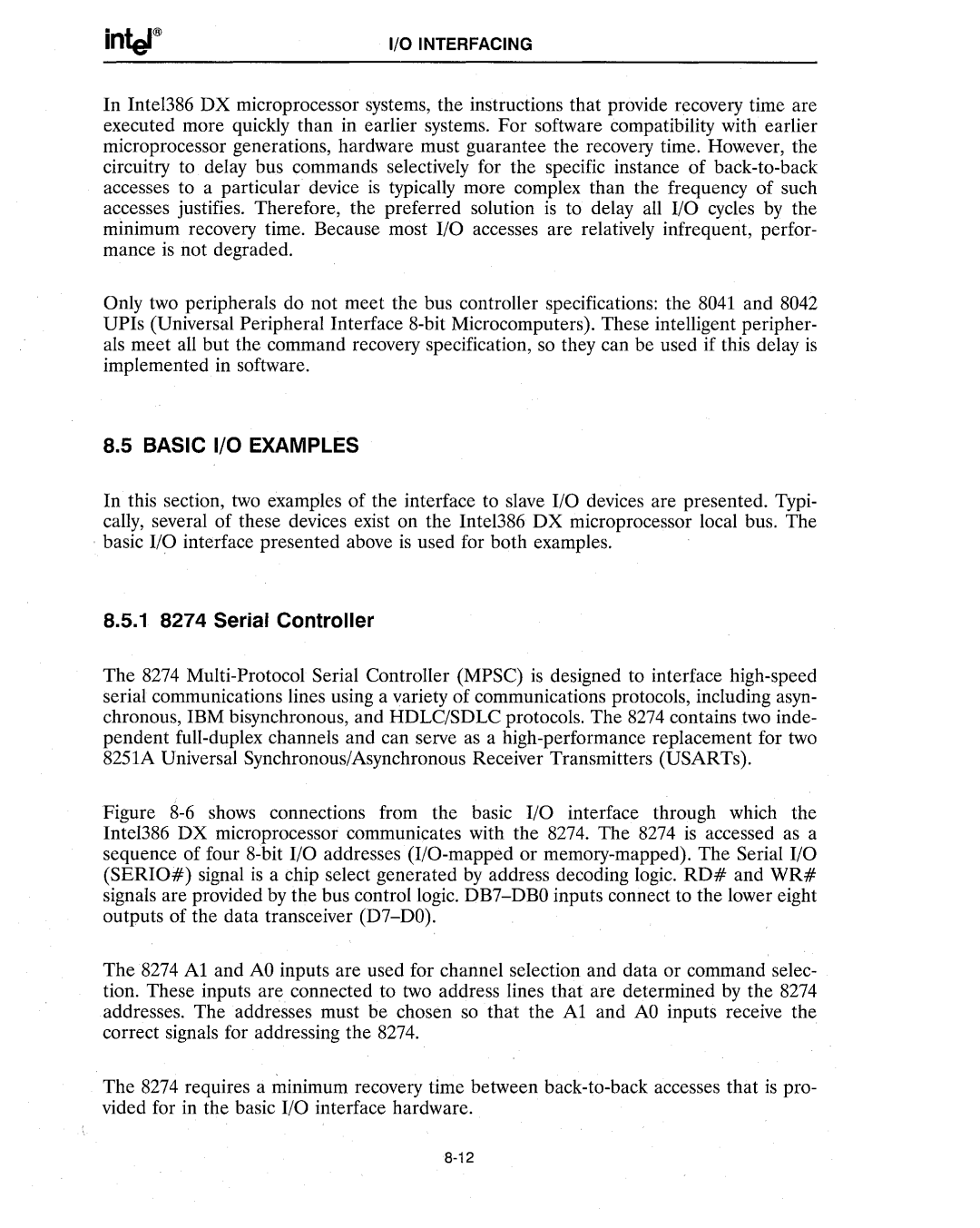
I/O INTERFACING
In Intel386 DX microprocessor systems, the instructions that provide recovery time are executed more quickly than in earlier systems. For software compatibility with earlier microprocessor generations, hardware must guarantee the recovery time. However, the circuitry to delay bus commands selectively for the specific instance of
Only two peripherals do not meet the bus controller specifications: the 8041 and 8042 UPls (Universal Peripheral Interface
8.5 BASIC I/O EXAMPLES
In this section, two examples of the interface to slave I/O devices are presented. Typi- cally, several of these devices exist on the Intel386 DX microprocessor local bus. The
. basic I/O interface presented above is used for both examples.
8.5.1 8274 Serial Controller
The 8274
Figure 8-6 shows connections from the basic I/O interface through which the Intel386 DX microprocessor communicates with the 8274. The 8274 is accessed as a sequence of four 8-bit I/O addresses (I/O-mapped or memory-mapped). The Serial I/O (SERIO#) signal is a chip select generated by address decoding logic. RD# and WR# signals are provided by the bus control logic. DB7-DBO inputs connect to the lower eight outputs of the data transceiver (D7-DO).
The 8274 Al and AO inputs are used for channel selection and data or command selec- tion. These inputs are connected to two address lines that are determined by the 8274 addresses. The addresses must be chosen so that the Al and AO inputs receive the correct signals for addressing the 8274.
The 8274 requires a minimum recovery time between back-to-back accesses that is pro-
vided for in the basic I/O interface hardware. | . |
|
